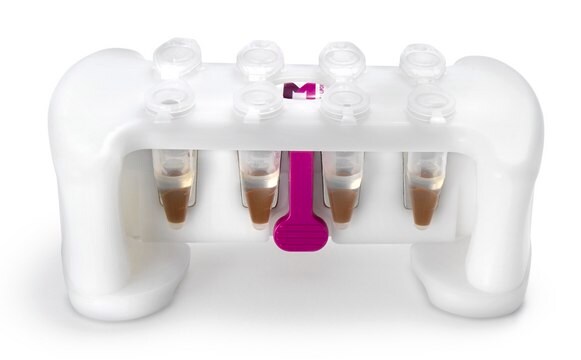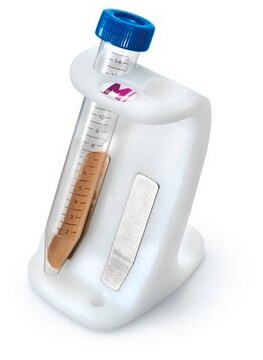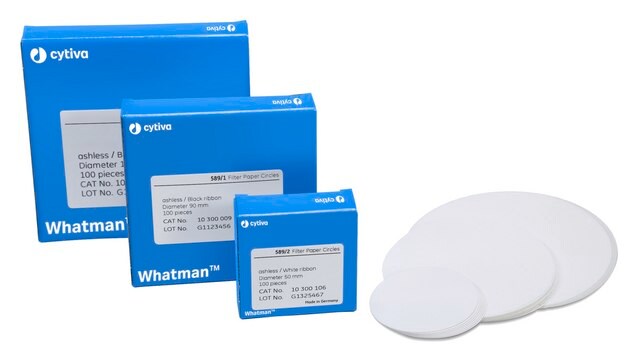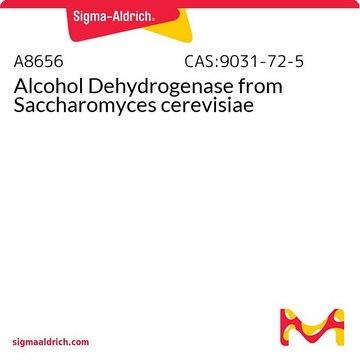推薦產品
product name
TSKgel® Chelate-5PW HPLC Column, phase iminodiacetic acid, L × I.D. 7.5 cm × 7.5 mm, 10 μm particle size
材料
stainless steel
產品線
TSKgel®
製造商/商標名
Tosoh Chelate-5PW, 08645
標籤範圍
20 μmol/mL resin ligand density
參數
≤20% organic solvent
≤3 M salt concentration
≤45 °C temperature
1.2 mL/min flow rate
10 bar max. pressure
技術
HPLC: suitable
長度 × 內徑
7.5 cm × 7.5 mm
基質
polymer particle platform
基質活性組
iminodiacetic acid phase
粒徑
10 μm
孔徑
1000 Å
工作pH值
2-12
相容性
technique used for affinity HPLC
分離技術
affinity
一般說明
High efficiency, resin-based TSKgel affinity columns (10 μm particles) separate or purify many enzymes and other proteins.
TSKgel Chelate-5PW columns utilize the tendency of iminodiacetic acid (IDA) to form a complex with metal ions, such as Zn2+, Ni2+ and Cu2+. The column is loaded with divalent metal ions by chelation. Peptides and proteins containing histidine residues will normally adsorb to these chelated ions at neutral pH. The retained compounds can be eluted with buffer containing imidazole or glycine. The key to making successful use of this retention mechanism is the proper selection of metal ions for chelation and the elution buffer to desorb the analytes. In general, Cu2+, interacts better with proteins; however, resolution is usually enhanced with Zn2+. A gradient mobile phase containing increasing imidazole or glycine concentrations is used to elute the retained compounds. Alternatively, a decreasing pH gradient can be used for elution purposes as well.
Applications include: immunoglobulins, transferrin, lectins, milk proteins, membrane proteins and peptides.
TSKgel Chelate-5PW columns utilize the tendency of iminodiacetic acid (IDA) to form a complex with metal ions, such as Zn2+, Ni2+ and Cu2+. The column is loaded with divalent metal ions by chelation. Peptides and proteins containing histidine residues will normally adsorb to these chelated ions at neutral pH. The retained compounds can be eluted with buffer containing imidazole or glycine. The key to making successful use of this retention mechanism is the proper selection of metal ions for chelation and the elution buffer to desorb the analytes. In general, Cu2+, interacts better with proteins; however, resolution is usually enhanced with Zn2+. A gradient mobile phase containing increasing imidazole or glycine concentrations is used to elute the retained compounds. Alternatively, a decreasing pH gradient can be used for elution purposes as well.
Applications include: immunoglobulins, transferrin, lectins, milk proteins, membrane proteins and peptides.
法律資訊
TSKgel is a registered trademark of Tosoh Corporation
我們的科學家團隊在所有研究領域都有豐富的經驗,包括生命科學、材料科學、化學合成、色譜、分析等.
聯絡技術服務








